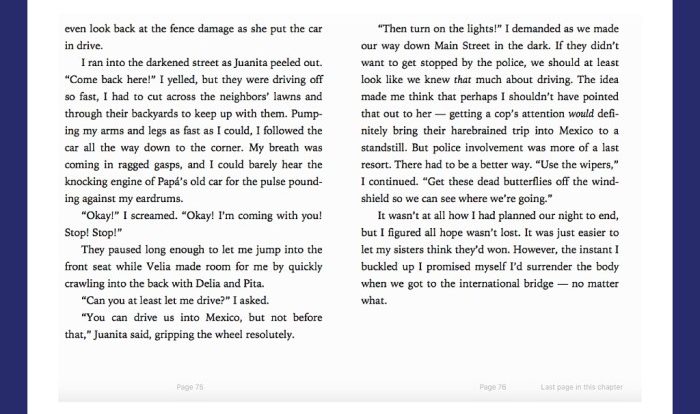Examples of personification in the veldt – Embarking on an exploration of examples of personification in “The Veldt,” we delve into the literary device that breathes life into inanimate objects, enhancing our understanding of the story’s themes and atmosphere.
Through personification, the African veldt transforms into a sentient entity, evoking empathy and foreshadowing the narrative’s tragic events.
Types of Personification in “The Veldt”

Personification is a literary device that gives human qualities to nonhuman things. In “The Veldt,” Bradbury uses personification in several ways to create a sense of empathy for the veldt and to foreshadow the story’s events.
Personification of the Veldt
The veldt is the most obvious example of personification in the story. Bradbury describes the veldt as a “living thing,” with a “heartbeat” and a “breath.” He also gives the veldt human emotions, such as hunger and anger.
This personification creates a sense of empathy for the veldt. Readers can see the veldt as a living being that is being threatened by the Hadley family. This empathy makes the story more suspenseful and emotional.
Personification of Other Objects, Examples of personification in the veldt
In addition to the veldt, Bradbury also personifies other objects in the story. For example, he personifies the lions in the veldt. He describes the lions as “hungry” and “angry,” and he gives them human thoughts and feelings.
This personification helps to foreshadow the story’s events. The lions represent the dangers of the veldt. They are a reminder that the veldt is a wild and unpredictable place.
Personification of the House
Bradbury also personifies the house in the story. He describes the house as a “machine” that is “out of control.” He also gives the house human emotions, such as anger and fear.
This personification contributes to the story’s overall tone and atmosphere. The house is a symbol of the Hadley family’s loss of control. It is a reminder that technology can be dangerous if it is not used responsibly.
The Effects of Personification in “The Veldt”

Empathy for the Veldt
As mentioned above, the personification of the veldt creates a sense of empathy for the nonhuman world. Readers can see the veldt as a living being that is being threatened by the Hadley family. This empathy makes the story more suspenseful and emotional.
Foreshadowing
The personification of the lions also foreshadows the story’s events. The lions represent the dangers of the veldt. They are a reminder that the veldt is a wild and unpredictable place.
Tone and Atmosphere
The personification of the house contributes to the story’s overall tone and atmosphere. The house is a symbol of the Hadley family’s loss of control. It is a reminder that technology can be dangerous if it is not used responsibly.
Symbolism and Personification in “The Veldt”

Symbols
The veldt, the lions, and the house are all symbols in “The Veldt.” The veldt represents the natural world, the lions represent the dangers of the natural world, and the house represents technology.
Personification
The personification of these symbols enhances their symbolic meaning. The personification of the veldt makes it seem more like a living being, which makes the threat to the veldt more real and immediate.
The personification of the lions makes them seem more like humans, which makes their danger more relatable. The personification of the house makes it seem more like a monster, which makes the Hadley family’s loss of control more frightening.
Themes
The personification of these symbols also connects the story’s themes to the real world. The theme of the dangers of technology is explored through the personification of the house. The theme of the importance of the natural world is explored through the personification of the veldt.
Compare and Contrast Personification in “The Veldt” and Other Works

“The Tell-Tale Heart”
One of the most famous examples of personification in literature is the story “The Tell-Tale Heart” by Edgar Allan Poe. In this story, the narrator personifies his own heart, which he believes is beating too loudly and will betray him.
The personification in “The Tell-Tale Heart” is similar to the personification in “The Veldt” in that it creates a sense of empathy for the nonhuman world. Readers can see the narrator’s heart as a living being that is being threatened by the narrator himself.
However, the personification in “The Tell-Tale Heart” is different from the personification in “The Veldt” in that it is more extreme. The narrator’s heart is not just a living being; it is a monster that is trying to destroy him.
“The Scarlet Letter”
Another example of personification in literature is the novel “The Scarlet Letter” by Nathaniel Hawthorne. In this novel, Hawthorne personifies the scarlet letter that Hester Prynne is forced to wear. The letter represents Hester’s sin, and Hawthorne gives it human qualities, such as a voice and a will of its own.
The personification in “The Scarlet Letter” is similar to the personification in “The Veldt” in that it enhances the symbolic meaning of an object. The letter is a symbol of Hester’s sin, and the personification of the letter makes the sin seem more real and immediate.
However, the personification in “The Scarlet Letter” is different from the personification in “The Veldt” in that it is more subtle. The letter does not have a voice or a will of its own; it is simply a physical object that is given human qualities.
Frequently Asked Questions: Examples Of Personification In The Veldt
What is the significance of personifying the veldt?
Personifying the veldt allows readers to connect with it on an emotional level, fostering empathy and highlighting its role as a reflection of the characters’ inner struggles.
How does personification contribute to the story’s atmosphere?
Personification creates a sense of unease and tension, as the boundaries between the natural and the artificial blur, foreshadowing the tragic events that unfold.

